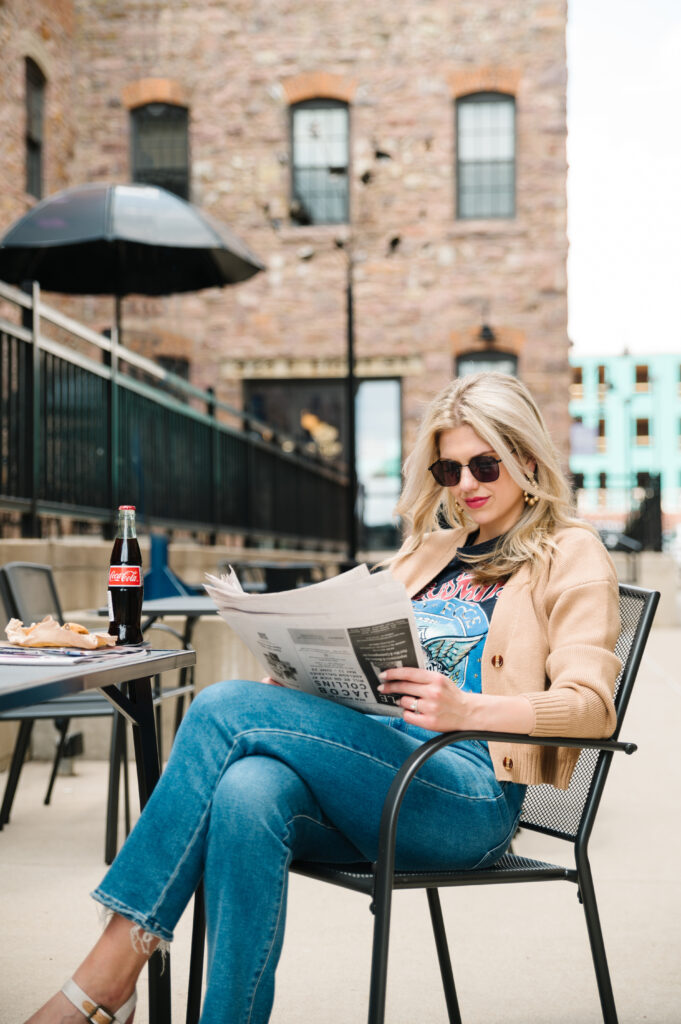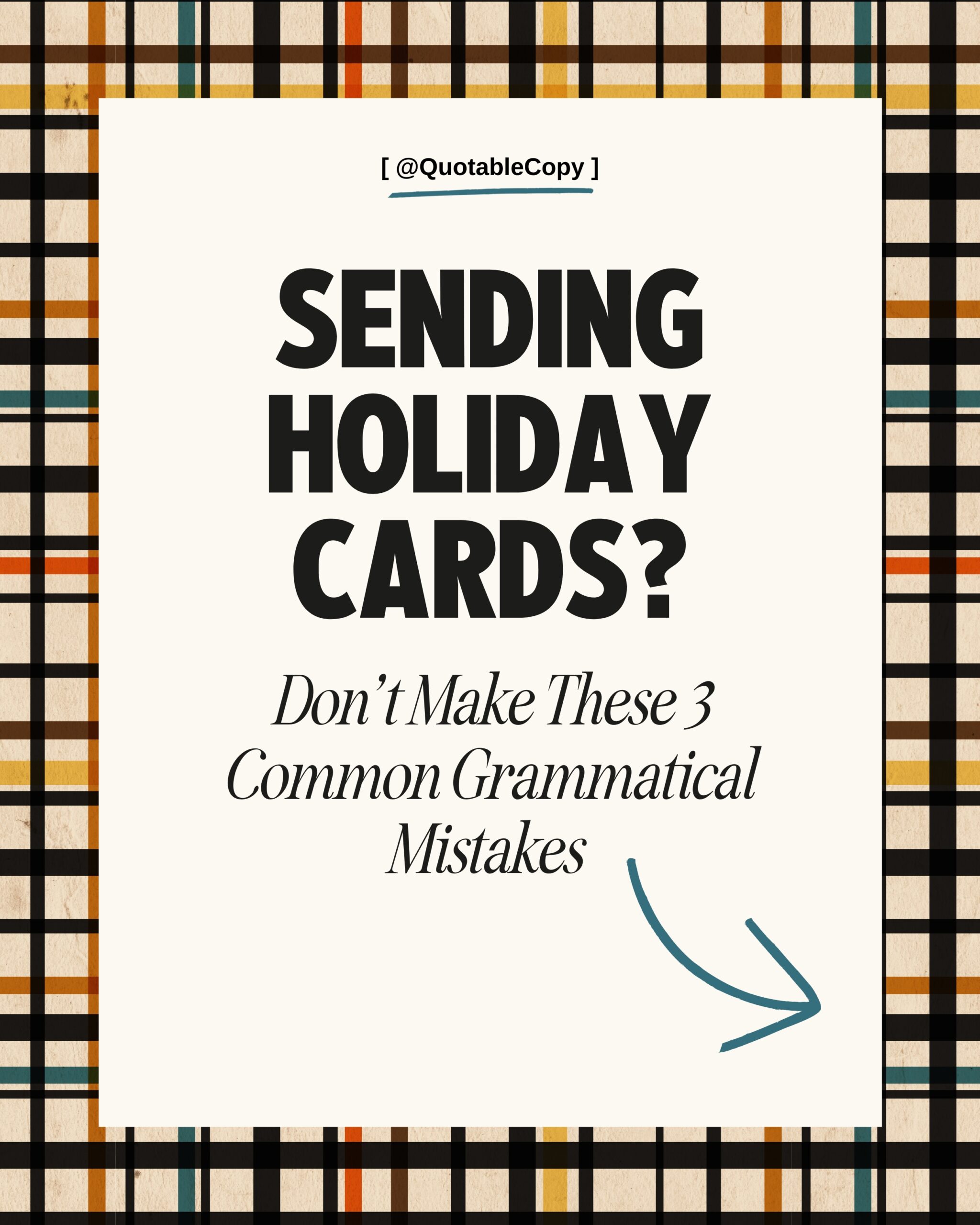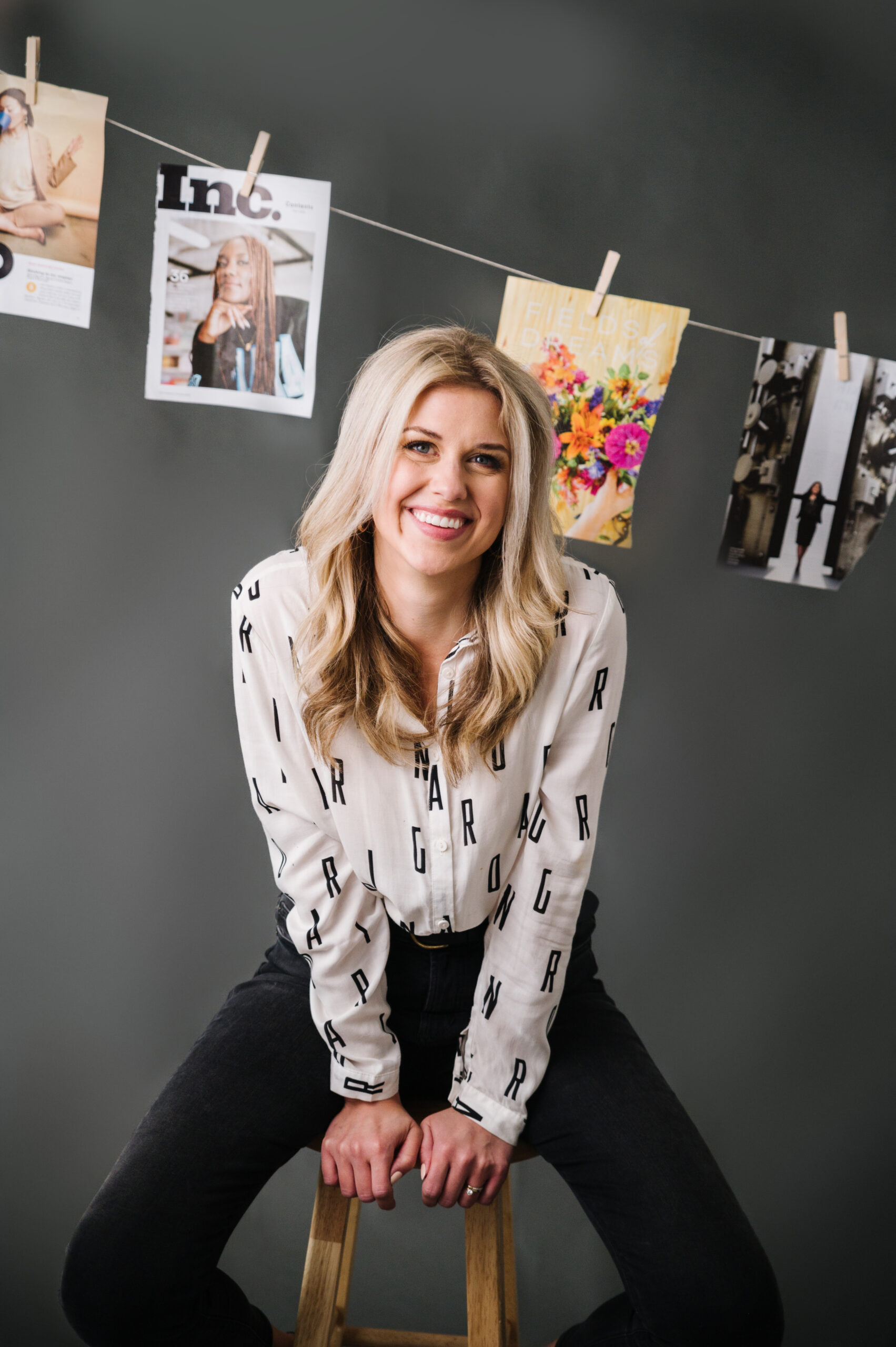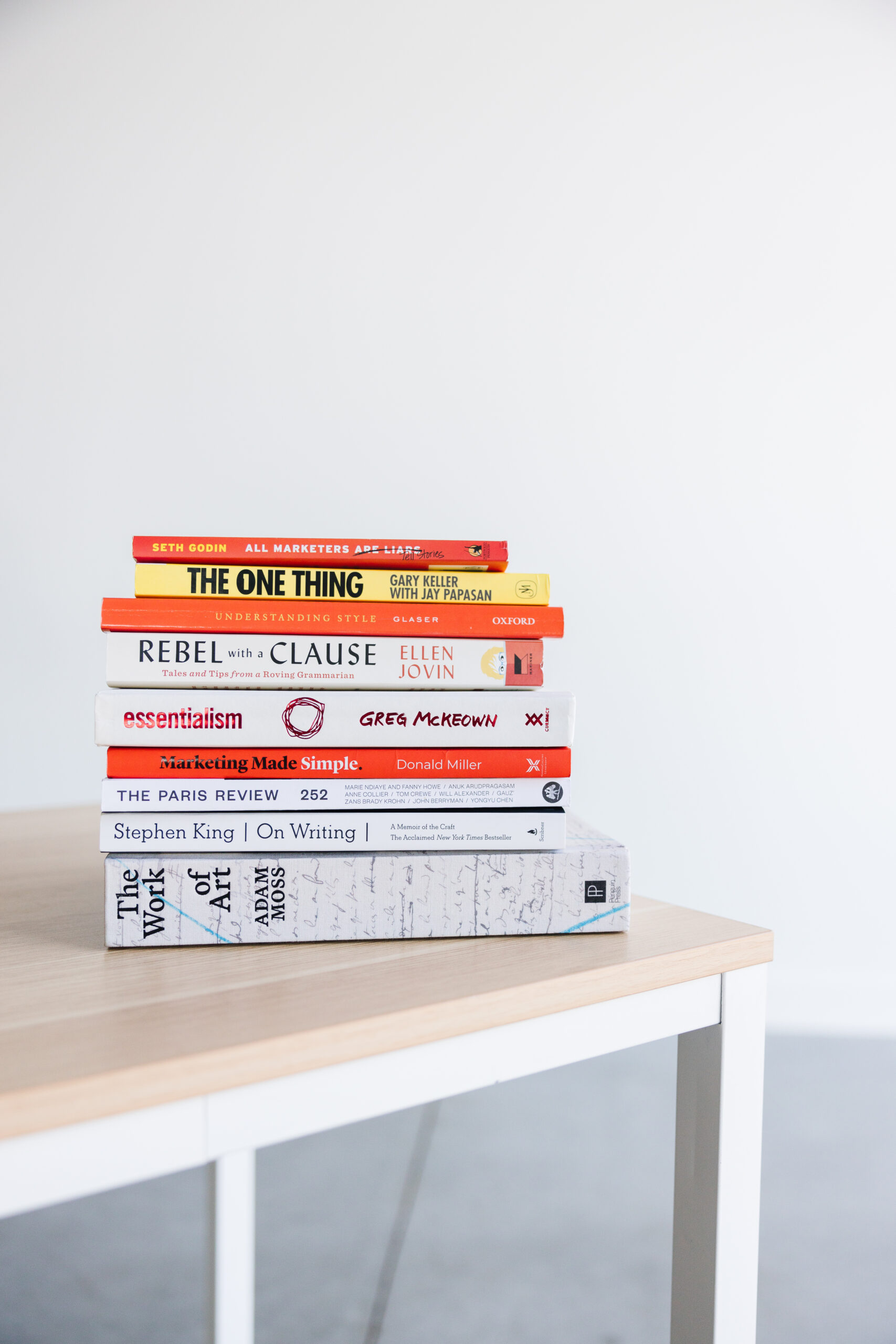OUr signature service
Allow us to craft your website copy, long-form sales page, launch email sequence, ad copy, or other need-it-now copy needs.
Free download
How strong is your brand voice? If you aren't sure, this guide is for you. Download our gorgeous, 20-page magazine to learn our secrets to writing with style.
VIP Day
Brand Voice Magazine
[ Tell Me More ]
[ Download Now ]
New!
How's your website really doing? Let's find out. Get the actionable tips you need to optimize your site (read: convert more clients).
Website Audit
[ I'm Intrigued ]
BY Sarah Klongerbo
Hello! Thanks for making this page a pitstop on your web-browsing journey. Please, stay awhile! We've got plenty of reading material to help you pass the time—and enhance your brand & copywriting while you're at it.
Follow @quotablecopy
[ Meet Our Founder & Editor In Chief ]
Grab the Brand Voice Magazine!
[ Download The Copy Edit ]
keep learning ABOUT:
tools & systems
STRATEGY & SALES
business & branding
copywriting & editing
productivity & life
Get Weekly Copywriting Tips!
[ Join The Weekly Wink ]
17 Proven Pricing & Positioning Strategies for Creative Small Businesses
Pricing is one of the trickiest parts of running a creative small business.
How do you price your products or services in a way that’s fair to the customer and profitable for you?
We won’t get into general pricing strategies today. Your overall pricing depends on your industry, your audience, your offer, your experience, supply and demand, economic factors, the list goes on…
If you want high-level pricing advice, see your business coach. (Or book a VIP Day with us. 😘)
If you want specific pricing advice, though, keep reading.
Because once you’ve got a general ballpark for your pricing, you need to narrow it down. What exactly will you charge: $95? $94.99? $100? Do those little dollars and cents even matter?
Yes, they do.
Studies have shown that even minor differences in pricing can make a major difference in people’s buying behavior.
If you want your offers to appear more (or less) affordable, here are several pricing psychology tips for creative small businesses to try.

Want Your Prices to Feel Affordable?
Usually, you want your product or service to feel more affordable (especially if it is more affordable).
If that’s your goal, here are several pricing psychology tactics you may want to try.
17 Pricing Psychology Tactics for Creatives
1. Anchor Your Pricing
Share your highest price first, so every price after it feels like a better deal.
For example: If you lead with your premium custom design package at $2,500, listing your standard $800 package beneath it feels like an incredible value.
2. Try Charm Pricing
Reduce the left digit by one, so the price feels significantly lower.
For example: By pricing your photography session at $199 instead of $200, clients subconsciously think they’re getting a deal.
3. Try Decoy Pricing
Offer three tiers, where one option is clearly worse than the other two (making those two seem more attractive).
For example: If you offer a membership, your tiers could be something like:
- Basic: Curriculum only for $29/month
- Standard: Curriculum + group coaching for $49/month
- Advanced: Curriculum + group coaching + 1:1 coaching for $55/month
(Why would you go for Standard, when you could get Advanced for only $6 more?)
4. Place Your Ideal Offer in the Center
Position your most profitable service package in the middle of three options.
For example: If you list your creative services in three columns on your website, clients will naturally gravitate toward the “Goldilocks” choice in the center.
5. Use the Numeral 9
Something about the numeral 9 is considered “magic” by pricing psychologists. Try ending your prices with it to boost sales.
For example: Instead of pricing your creative template at $30, price it at $29 to make it feel more accessible.
6. Use Other Odd Numbers
Try ending prices in an odd number, like 7 or 5, rather than an even number, to create a sense of precision and thoughtfulness.
For example: By pricing your course at $375 instead of $370, you imply a level of intention that attracts new members.
7. Bundle Your Prices
Sell two or more products together at a discounted rate. Since the bundled price is more convenient, it’s perceived as higher value.
For example: Instead of having clients buy each item separately, package your logo design with business cards and social media templates for one clear price.
8. Run a BOGO Sale
“Buy one, get one free” promotions are perceived as more valuable than “save 50%” promos — even though the actual discount is the same.
For example: Instead of offering 50% off your photography services, offer a free newborn session when someone books a maternity session to create more excitement (and a longer lifetime customer value).
9. Ditch the $ Sign
Remove the dollar sign — or make it visually smaller — to reduce the psychological pain of spending. (Unless you serve international clients, in which case you should keep the dollar sign, and maybe add “USD” or “CAD,” for clarity.)
For example: If you run a high-end restaurant, consider listing an entree as “65” instead of “$65” to help prevent sticker shock.
10. Ditch the Comma
Eliminate the comma in four- (or larger-) digit numbers to make them feel smaller and more approachable to budget-conscious clients.
For example: List your design service as “1200,” not “$1,200” (and especially not “$1,200.00”).
11. Put a Large Number Near a Small Price
Another form of price anchoring is putting another (much larger) number near your price to make it seem even smaller by comparison.
For example: Advertise “over 5,000 creatives served!” next to your $297 course to make the price seem tiny compared to your impressive client count.
12. Put “Small” Words Near the Price
Place words that insinuate smallness (like “low,” “just,” or “only) in close proximity to your price to create a subliminal connection.
For example: By writing “get started for only $50” instead of “get started for $50,” you may boost the click rate on your sales page CTAs.
13. Put the Price at the Bottom
Start by sharing the incredible value of your offer, then reveal the price last, when they’re already sold on the benefits.
For example: The higher the price of your creative services, the more “selling” you should do before introducing the actual investment.
14. Discount Whichever Digit Is Bigger
Choose the promotion that appears more significant, whether it’s a percentage or dollar amount off.
For example: If you’re debating whether to offer 10% off or $25 off for your Black Friday sale, go with $25 (even if it’s essentially the same discount).
15. Make It Sound Smaller (Literally)
Use prices that use sound smaller when you say them out loud.
For example: Instead of $17.75 (seven syllables), price your digital product at $18 (two syllables).
16. Reframe It with Smaller Values
Divide your larger price into a smaller base value (like $10/month instead of $120/year).
For example: Presenting your $600 annual membership as “less than $2 per day” makes the investment feel more manageable.
17. Place Prices Toward the Left
Position your pricing on the left side (or at least the middle) of the content to help readers make the connection between left and small in our brains.
For example: Instead of listing your price on the right side of your sales page, consider placing it on the left or middle.
Want Your Prices to Feel Luxurious?
We aren’t recommending you try all, or even any, of these tactics. Personally, we find some of them a bit… tactic-y.
Each one of these strategies can make your product or service seem like more of a steal.
But what if you don’t want your offer to seem like a steal? What if you want it to seem more elevated, exclusive, luxurious?
If you want your creative small business to feel more upscale, we recommend sticking to round numbers. They’re simple, authentic, and easy to remember.
For example, a copywriting VIP Day with Quotable Copy is a flat $2,000.
Could we theoretically make it appear cheaper by pricing it at $1,995? Yes, but we don’t want it to appear cheap. Because it’s not. And neither are we.
We want rates that don’t feel gimmicky, arbitrary, or pulled out of our butts.
We want rates that reflect the value of what we provide.
And that make our sales pages and invoices look nice and clean. (We have a feeling our brand designer friends would agree!)
Get More Pricing & Positioning Strategy Advice
We share lots of strategic positioning advice in our copywriting newsletter, The Weekly Wink, and our marketing newsletter, Passing Notes.
Want more personal recommendations for your creative business?
Consider a VIP Day with us. Along with writing killer copy for your website or marketing campaign, we’re happy to provide expert guidance on your pricing, positioning, and more.
[ Book a VIP Day ]
Keep up the good reading
[ See All Articles ]
©2023 – 2025 Quotable Copy™








